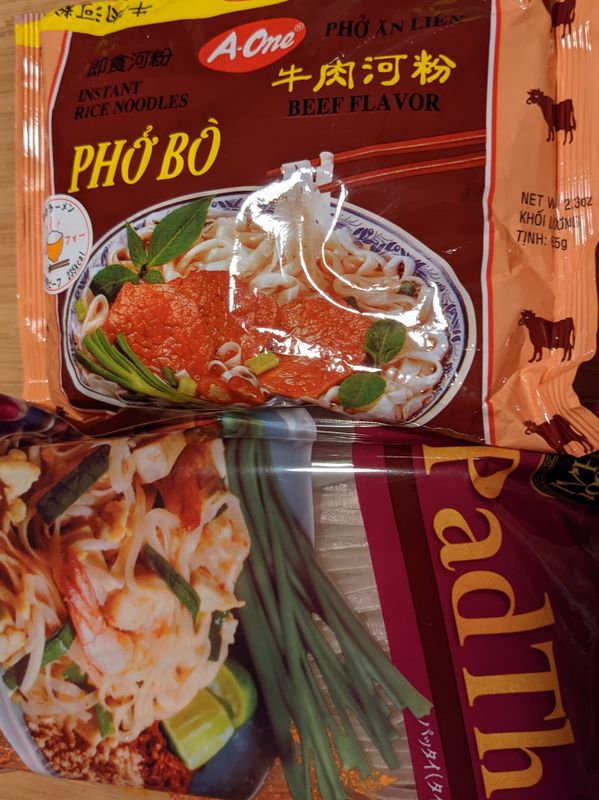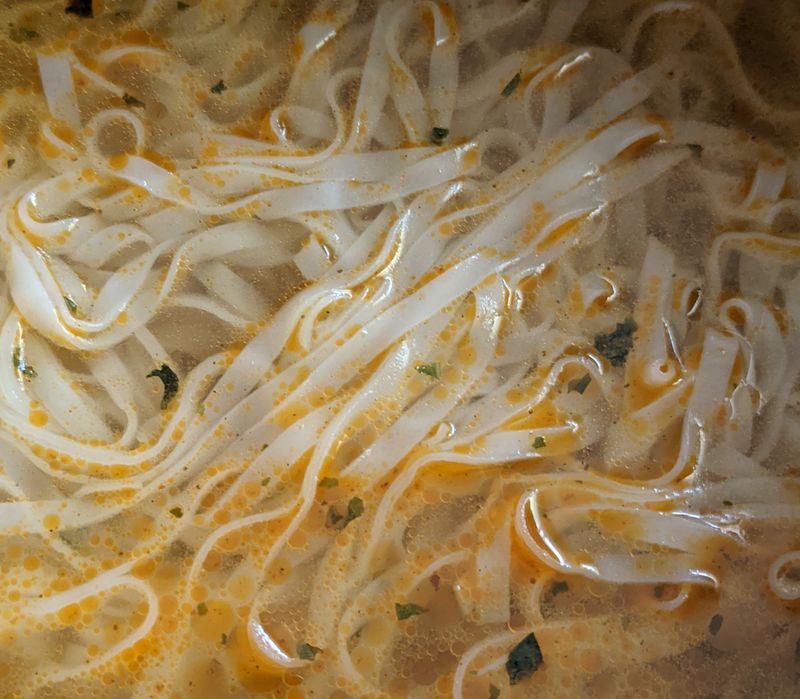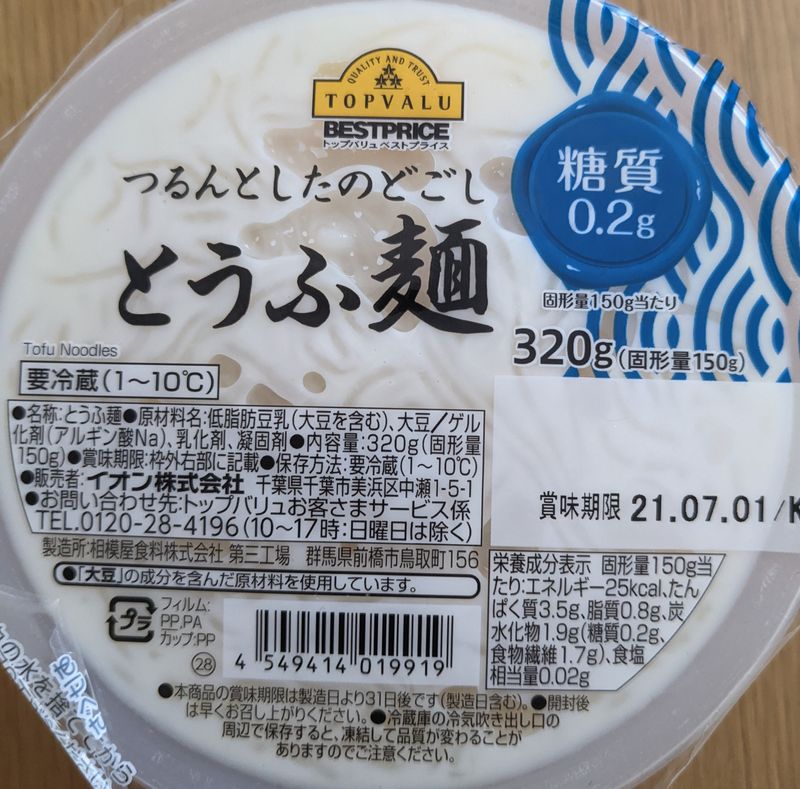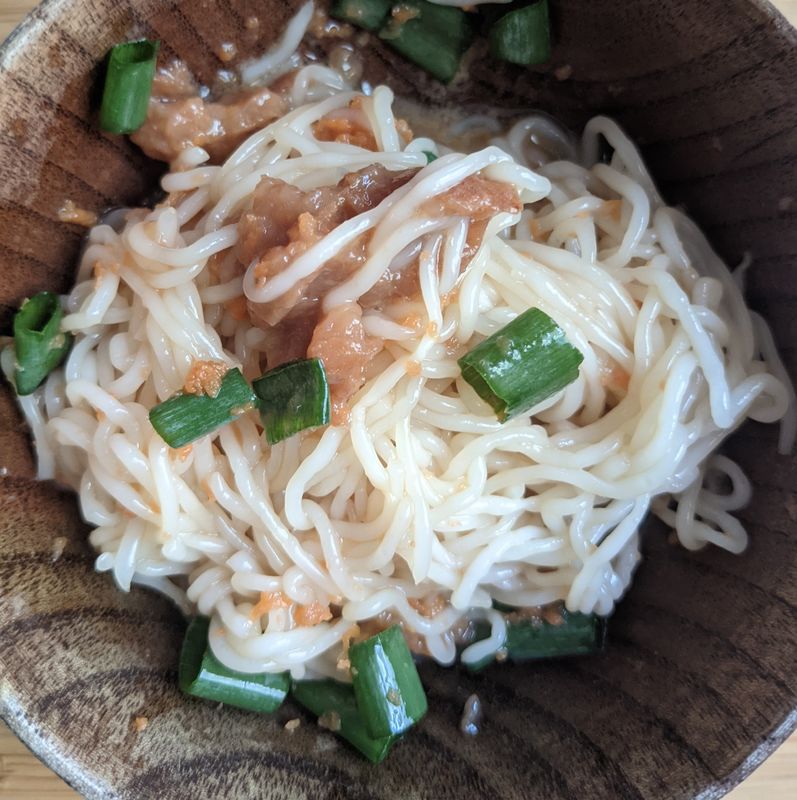Jul 5, 2021
Gluten Free Noodles: Rice, Konnyaku, and Tofu
Post deciding to eat gluten free at home, testing out the variety of gluten free noodles seemed like a good plan. We often eat cold soba noodles during the summer months, but these are usually soba mixed with wheat flour. Chinese style cold noodles are another good cold option. Switching these dishes to gluten free noodle dishes isn't difficult.
Here are my preliminary tests to experiment with some of the gluten free noodles easily available in Japan.
These are all perfect for when you're dieting but want to eat noodles, or just to rotate in for a lower calorie version of a meal. No need to be avoiding gluten – in fact I have eaten most of these before avoiding gluten.
Bean or rice based noodles are something we already use sometimes. The instant harusame soups are good and I sometimes make a homemade version. The thin type is easy enough for cold salads so I plan to try this in a chukamen style. The wide flat noodles made from rice are perfect for pad Thai or pho.

I have been wanting to make (actually just eat) pho, but it involves buying hard to find ingredients that I will probably never use up. I found an instant version in Kaldi Coffee Farm and also picked up an instant pad Thai kit. The pho is what you would expect of an instant noodle soup. It's merit was that all I had to do was add boiled water, which is great when it's too hot to cook. Plus the chili oil cleared out my sinuses a little.


Konnyaku noodles are not something I'm excited about. I already use the little cups of konnyaku jelly, stored in the freezer, as an ice cream substitute.
Healthy and almost no calories, not much in the taste department, konnyaku noodle options under 100 yen a packet are plentiful in any Japanese supermarket. I have had these, or the thinly sliced version, in dishes like niku jaga. It is fairly easy to incorporate konnyaku into winter basics like oden and nabe.
I think the trick here is cooking the noodles in something flavorful or pouring lots of yummy toppings and sauce on them. These have a fishy smell, so it's better to rinse them in water before using them.
I made a coconut curry and had an amount of leftover that was maybe enough for one meal. I thought this might be a nice chance to try adding in the bag of shirataki (literally, "white waterfall") sitting in the fridge. I removed the liquid in the bag, rinsed the noodles, and heated them while reheating the curry leftovers. They aren't bad at all, but the texture is a bit chewy in a different way than other kinds of noodles.


Tofu noodles are something I started to see recently. Sounded good as an udon and nabe noodle substitute.
Aeon stores carry a packet of tofu noodles along with a pouch of tsuyu, for udon style soup. It costs a little under 200 yen for one serving. I also found a dish of noodles alone for about 100 yen.
I got this cheaper version and tested some out in the same way I'd eat somen. The package is sort of the same as a pack of tofu – it's got white liquid that you'll want to drain out first. There are no instructions for how to use them, so I assumed whatever goes for tofu would work. The noodles have no taste, just like tofu.
I mixed in some negi, tsuyu, umeboshi and a little grated carrot to about half of the noodles. Not bad at all.

Tofu noodles are something I'd use again. I'm wondering if they can be used for something like yaki soba without melting or sticking too much.
Please comment if you have a favorite gluten free noodle I don't know about yet!



0 Comments